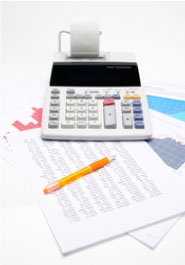The most significant findings of the impressions study show advertising specialties are less expensive per impression than most other media and are very affordable and effective when compared to other forms of media.
Key findings of the study include:
- Cost per Impression. In the U.S., the cost per impression of a promotional product stayed virtually the same from 2008 to 2010, at .005 cents.
- Identifying the Advertiser. Eighty-three percent in the U.S. say they can identify the advertiser on a promotional item they own.
- Product Usage. Bags have the highest number of impressions in a month, over 1,000, and over one-third (36%) of those with incomes under $50,000 own bags.
- Gender Preferences. Males are more likely than females to own shirts and caps, while females are more likely to have bags, writing instruments, calendars and health and safety products.
- Ethnic Preferences. African Americans have more promotional products on average (11.3) than any other group.
- Positive Reinforcement. Seventy-five percent of independent voters prefer consumer-branded products; nearly 1.5 times more than Democrats or Republicans.
- Influencing User Opinions. Forty-one percent of U.S. respondents say their opinion of the advertiser is more favorable after receiving a promotional product.
- Global Reach. Nearly two-thirds (63%) of respondents from Great Britain have received and kept a pen in the last 12 months. In the U.S., writing instruments are used the most often, an average of 18.2 times per month.
- Superior Pass Along. After receiving a promotional product they don’t plan to keep, nearly two-thirds (62%) of respondents in the U.S. say they give the item to someone else.
- Popular Products. The most commonly owned promotional products among U.S. respondents are writing instruments (46%), followed by shirts (38%) and calendars (24%).

At $0.005, the average cost-per-impression (CPI) of an advertising specialty item is less than nearly any other media. According to data obtained by ASI the CPI for a national magazine ad is $0.045; for a newspaper ad, $0.029; for a prime-time TV ad, $0.018; for a cable prime-time TV ad, $0.005; for a syndicated daytime TV ad, $0.005; and for a spot radio ad, $0.058.
To complete its research, ASI conducted a total of 3,332 online and in-person surveys, including interviews with businesspeople in New York, Chicago, Los Angeles, Philadelphia, London, Sydney, Toronto and Montreal metro areas.
The 2.0 study, a follow-up to the definitive 2008 survey, includes new demographic information on politics, ethnicity, gender and age, since knowing the likely recipient of products is paramount for an advertiser. This year, the comprehensive report also adds global markets and includes more products, such as automotive accessories and food.